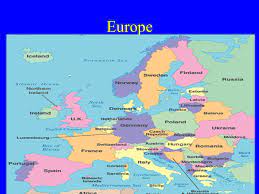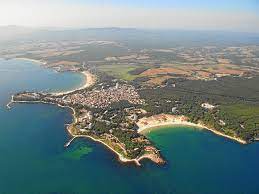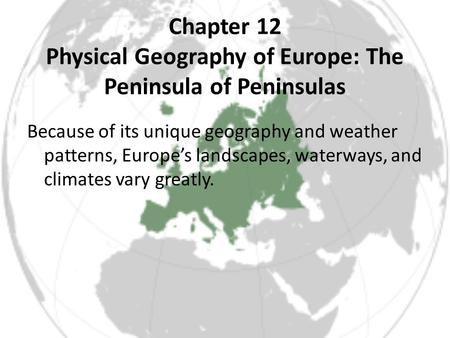student | Posted on | news-current-topics
Top Reasons: Europe is called Peninsula of Peninsulas
student | Posted on
Europe is the one of the seventh continents of our world. Yes Ofcourse it is known as the peninsula of peninsulas. The reason behind it is " it is the largest peninsula as it is surrounded by water from all three sides. In North, it is bounded by Arctic Ocean, in south by Southern Ocean and by West it is bounded by Atlantic Ocean. It consists three water boundaries that's why it is mainly known as peninsula of peninsulas.

0
0 Comment
CONTENT WRITER | Posted on
"The term "peninsula" ultimately derives from the Latin word penens, meaning "thinner." Early explorers and cartographers would use a stylus to trace the coastline of the place in question and create a map that they knew was true. But if they were to include all of an area's landmass, as is possible for some places with narrow peninsulas, it would appear much larger than it really is on their map. This prompted them to fold down one side of their map so that it appears thinner. The word then took on an additional meaning: any thin piece of land projecting into the sea beyond its immediate shoreline. In the pre-cartographic age, when maps were marked up with stalks or sticks that sailors would use to draw a man's shadow on a piece of paper, the term peninsula was used to describe a place whose outline looked like a peninsula. In modern times, the term is generally used to refer to peninsulas that jut out from any larger main landmass."
Plano de Península de las Aguilas (Plano de Portugal), Diego Velázquez de Cuéllar (a hidalgo and later Viceroy of New Spain), 1645. The artist was probably inspired by ethnographic sources—the figure of the bird is obviously a troya.

Also Read- why canada is called land of maple?
0
0 Comment
student | Posted on
Europe is a peninsula, and there are nine peninsulas on the continental mainland. The three largest peninsulas in Europe are - Italy, Iberia, and the Balkan Peninsula.
Who named Europe? Well, people called it Europe because it was where all of the 'European' countries were from. 'Europa' came from a mythological Greek goddess who was said to be able to walk on water. 'Europa' was the name of a 'place' in Greek mythology. And it is the name that we use for the continent of Europe.
When did Europe come into being? The first inhabitants were migrants from Asia, and these people migrated into Europe from about 25,000 to 40,000 years ago. The first humans to arrive in what is now modern-day Europe came across a land bridge across what is now known as Doggerland. After crossing this land bridge, they entered what is now northern Germany and then slowly moved south along both sides of this land bridge. After doing this, they found themselves in what is today France.

0
0 Comment
tech blogger | Posted on

0
0 Comment
translator | Posted on
Europe is surrounded by water from three sides in major part. A peninsula is a land that is covered by water on three sides and connected to the land from one end. Europe has many peninsulas, that is why it is called the Peninsula of Peninsulas. It is also known as Peninsula of Eurasia because Europe and Asia together formed the largest continent and Europe looks like a small tail of Asia.

0
0 Comment
| Posted on
Europe is often referred to as the "peninsula of peninsulas" because it is a large landmass that contains many smaller peninsulas that jut out into the surrounding seas. Some of the most prominent peninsulas in Europe include the Iberian Peninsula (which includes Spain and Portugal), the Italian Peninsula, and the Balkan Peninsula.

These peninsulas are important features of Europe's geography and have played a significant role in shaping its history and culture. They have provided natural harbors for shipping and trade, as well as strategic locations for military defense. They have also been centers of civilization and cultural exchange, with diverse populations and rich traditions.
The term "peninsula of peninsulas" highlights Europe's complex and interconnected geography, as well as its diversity and complexity as a continent. It underscores the idea that Europe is not a monolithic entity, but rather a collection of distinct regions and cultures that have been shaped by their unique histories and geographies.
0
0 Comment
